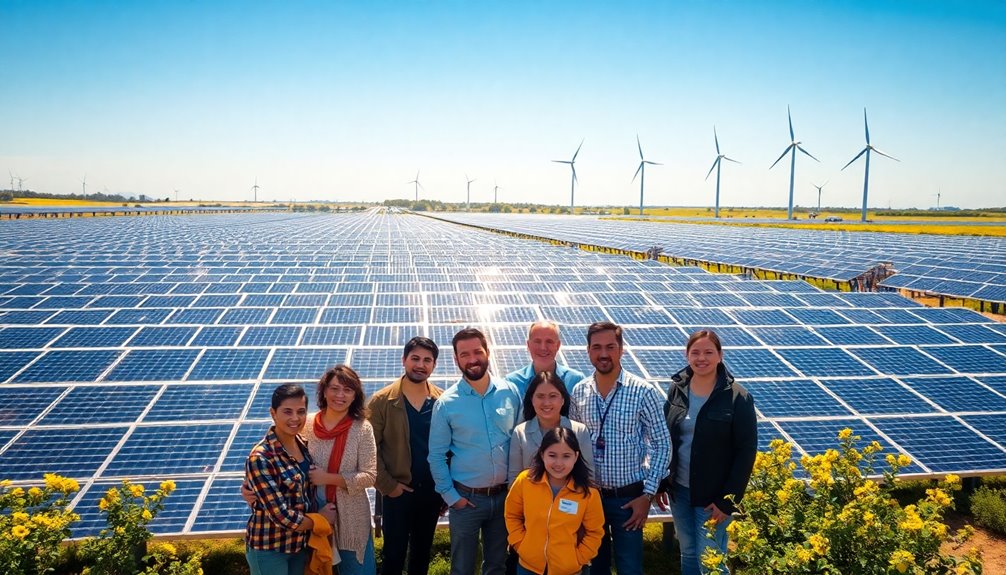You've likely noticed the buzz around solar companies lately. With advancements in technology and strong financial incentives, more households are turning to solar energy. The projected increase in solar power generation by 75% by 2025 reflects a significant shift. And with government policies like the Inflation Reduction Act, the benefits are hard to ignore. But what's driving this rapid adoption, and how does it affect you? Let's explore the reasons behind this growing trend.

As solar power generation in the U.S. is set to soar by 75% from 2023 to 2025, reaching an impressive 286 billion kWh, solar companies are positioned to play a pivotal role in this energy revolution. You might be wondering why this industry is buzzing with excitement. The answer lies in the rapid growth and technological advancements shaping the solar landscape. Over five million homes already harness solar energy, and projections suggest this number will double by 2030.
With the U.S. solar industry expected to install an average of 43 GWdc annually from 2025 through 2029, now's the time to pay attention. You're probably aware of the global solar market's impressive average annual growth rate of 26% over the past decade. This trend isn't just a fluke; it's fueled by ongoing technological progress that's making solar systems more efficient and affordable. Technological advancements in PV cell efficiency and battery storage are improving reliability and cost-effectiveness, further enhancing the appeal of solar installations.
As solar energy solidifies its position as a leading source of new electricity generation in the U.S., innovations like smart grids and virtual power plants (VPPs) are enhancing the appeal of solar installations for both homeowners and businesses. Those advancements not only increase energy security but also boost property values, making solar an attractive investment.
Financial incentives are another significant driver behind this booming industry. Government policies, particularly the Inflation Reduction Act, are creating an environment ripe for solar growth. With federal incentives like the Investment Tax Credit (ITC), installing solar panels has become financially appealing. State-specific rebates and grants further support this trend, making solar adoption easier than ever.
You'll find that the combination of technological progress and financial incentives is propelling the solar industry forward, pushing more companies to adopt solar energy solutions. But how do solar companies attract potential customers in this thriving market? Digital marketing plays a crucial role.
Social media platforms allow companies to reach a wider audience, engaging them through interactive content that builds trust and credibility. Competitor analysis helps solar companies understand market trends and consumer needs, enabling them to tailor their offerings effectively. By emphasizing sustainability and the environmental benefits of solar energy, they can enhance their brand appeal and stand out in a competitive landscape.
As you consider the future of energy generation, it's clear that solar companies are at the forefront of this transformation. The expanding market, driven by technological advancements and financial incentives, positions solar energy as a viable option for more households and businesses.
If you're contemplating investing in solar, you're aligning yourself with a growing movement that prioritizes sustainability and innovation. With the trajectory of the solar industry set to rise sharply, now's the perfect moment to explore how solar energy can benefit you. Embrace this energy revolution and join the millions already enjoying the advantages of solar power.









